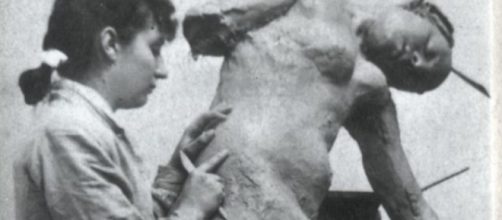The only good thing about this otherwise sad story is that it’s not likely to happen again, or at least not as often as it used to. In the words of Bob Dylan, “The Times They Are A-Changin.” Camille Claudel, the 19th century French sculptor best known as Auguste Rodin’s mistress, has been given a museum to call her own to house what’s billed as the largest collection of her work anywhere. Certainly it beats the lone room allotted to her in the Rodin Museum. Her hometown of Nogent-sur-Seine bought the collection from her great-niece, and also bought her former home, which it renovated to showcase the works she didn’t destroy in a rampage after her 15-year love affair ended.
At issue: Rodin refusal to divorce his wife and marry her.
Bad breakup
In hindsight, Claudel’s relationship with Rodin was doomed. He was content with her as his mistress. In the end she lost her identity, her will to make art, and finally her mind, which landed her in a psychiatric hospital for the rest of her life. Reportedly she suffered paranoia, fearful that Rodin would steal her ideas; which is why even in the mental institution, she refused art supplies. Claudel’s story is not unlike that of women in Picasso’s long-term relationships: two were driven to mental breakdowns and two committed suicide. All of which brings to mind an essay that noted artist and educator June Wayne wrote in a collection of essays called Art Studies in 1975.
There have always been artists of both sexes who live in obscurity, she said, but it’s usually males who survive in art history – a result of what she saw as “a biological determination... He makes art and the woman makes babies...and thought to dabble in oils in the family den, which only she refers to as her studio. She is a woman trying to pass as an artist.”
Lesson learned
Wayne pressed on with her point, saying that whether a woman is an artist’s wife or an artist herself, she assists in the man’s studio looking after the framing and shipping. (Isn’t that what Lee Krasner did for Jackson Pollock?) She sees the history of female artist as dependency on male artists for financial support, her own art-making unheeded.
The timeline in the tragic life of Claudel coincides with such history: She started out with Rodin as a student, moved to serving him as an assistant and lastly as his model and mistress. As angry as Wayne sounds in her essay, she did more than just rant about sexism in the art world. During the ‘70s; she taught young female artists something she called “professionalization” in a series of seminars – basically a how-to on earning a living that included pricing art and approaching art galleries.

